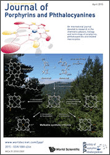
JOURNAL OF PORPHYRINS AND PHTHALOCYANINES
metrics 2024
Advancing the Science of Light-Absorbing Compounds
Introduction
JOURNAL OF PORPHYRINS AND PHTHALOCYANINES, published by WORLD SCIENTIFIC PUBL CO PTE LTD, is an influential peer-reviewed journal dedicated to advancing the field of porphyrins and phthalocyanines, key compounds in both chemistry and materials science. With an ISSN of 1088-4246 and an E-ISSN of 1099-1409, this journal has been a vital resource since its inception in 1997 and is expected to continue until 2024. The journal holds a respectable position in the academic landscape, categorized in the Q3 quartile for miscellaneous Chemistry journals and ranked #252 out of 408 in the general chemistry category according to Scopus, reflecting a growing impact in the field despite its current percentile standing at 38th. JOURNAL OF PORPHYRINS AND PHTHALOCYANINES seeks to publish original research articles, reviews, and critical studies that explore the synthesis, characterization, and applications of these versatile compounds, which play essential roles in numerous scientific disciplines, from catalysis to materials development. This journal is an indispensable platform for researchers and professionals seeking to disseminate their findings, engage with contemporary discussions, and stay informed about cutting-edge advancements in porphyrin and phthalocyanine research.
Metrics 2024
 0.24
0.24 0.90
0.90 1.10
1.10 70
70Metrics History
Rank 2024
Scopus
IF (Web Of Science)
JCI (Web Of Science)
Quartile History
Similar Journals
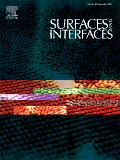
Surfaces and Interfaces
Connecting Disciplines through Surface InsightsSurfaces and Interfaces is a leading international journal published by Elsevier, dedicated to advancing the understanding of surface and interfacial phenomena across various disciplines, including chemistry, materials science, and physics. With an impressive impact factor placing it in the Q1 quartile for its categories as of 2023—spanning Chemistry, Condensed Matter Physics, and Surfaces, Coatings, and Films—this journal not only serves as a critical platform for innovative research but also reflects the dynamic nature of surface science in contemporary applications. The journal is indexed in Scopus, ranking 25th out of 132 in the Materials Science – Surfaces, Coatings and Films category, marking it in the top 19% of this prestigious field. Although it is not an open-access platform, the journal remains a vital source of curated academic material for researchers, professionals, and students seeking to deepen their knowledge and contribute to ongoing conversations in surface and interface science. Published from the heart of Europe in Amsterdam, Surfaces and Interfaces invites submissions that challenge conventional paradigms and explore the forefront of technology and materials.
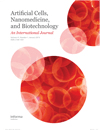
Artificial Cells Nanomedicine and Biotechnology
Unlocking the Potential of Nanomedicine for Enhanced Patient Care.Artificial Cells Nanomedicine and Biotechnology is a prestigious peer-reviewed journal published by TAYLOR & FRANCIS LTD, specializing in the rapidly evolving fields of biomedical engineering, biotechnology, and nanomedicine. Established in 2013 and operating under an open-access model since 2019, the journal aims to bridge the gap between fundamental science and real-world medical applications, showcasing cutting-edge research that advances our understanding of artificial cells and their biotechnological applications. With an impressive impact factor and ranking in the Q2 quartile across various categories, including Biomedical Engineering, Medicine, and Pharmaceutical Sciences, the journal is a leading platform for innovative studies that contribute significantly to the realm of healthcare and therapeutic development. Researchers, professionals, and students alike will find invaluable insights and advancements within its pages, positioning it as a vital resource for those dedicated to pushing the boundaries of science and improving patient outcomes.
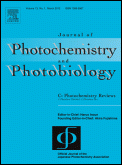
JOURNAL OF PHOTOCHEMISTRY AND PHOTOBIOLOGY C-PHOTOCHEMISTRY REVIEWS
Advancing the Frontiers of Light and LifeThe JOURNAL OF PHOTOCHEMISTRY AND PHOTOBIOLOGY C-PHOTOCHEMISTRY REVIEWS, published by Elsevier, is a premier scholarly journal that serves as a critical resource for researchers and professionals in the field of photochemistry and photobiology. With a distinguished Q1 ranking in key categories such as Catalysis, Organic Chemistry, and Physical and Theoretical Chemistry, this journal consistently publishes high-impact articles that contribute significantly to the advancement of knowledge in these disciplines. The journal's rigorous peer-review process ensures the integrity and quality of the research it disseminates. Researchers benefit from its comprehensive review articles that discuss recent advancements, theoretical developments, and practical applications of photochemical processes, making it an essential read for anyone in the field. The journal's impact and relevance are evidenced by its impressive Scopus rankings, including a top percentile of 98th in Organic Chemistry. As the journal continues to explore innovative and interdisciplinary approaches, it stands out as a vital platform for sharing and discussing cutting-edge research findings within the community.

Journal of Nano Research
Fostering Collaboration in NanotechnologyThe Journal of Nano Research, published by Trans Tech Publications Ltd, is a distinguished academic journal dedicated to the rapidly evolving field of nanotechnology and materials science. With an ISSN of 1662-5250 and an E-ISSN of 1661-9897, the journal has been an important platform for researchers and professionals since its inception in 2008, continuing to provide high-quality peer-reviewed research through to 2024. Nestled in Switzerland, the Journal of Nano Research plays a pivotal role in disseminating cutting-edge findings, as recognized by its categorization in Q3 for Materials Science and Physics while being positioned in Q4 for Nanoscience and Nanotechnology as of 2023. With Scopus rankings highlighting its impact, including Rank #129 in general Physics and Astronomy and Rank #300 in Materials Science, this journal is crucial for academics seeking to stay ahead in research trends and innovations in nano-related disciplines. Although it operates under a subscription model, the journal's objectives include fostering collaboration and knowledge-sharing among researchers, making it an invaluable resource for anyone immersed in the world of nanotechnology.
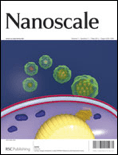
Nanoscale
Elevating Research Standards in Nanotechnology.Nanoscale is a premier academic journal published by the Royal Society of Chemistry, dedicated to advancing the field of nanoscience and nanotechnology. With both its ISSN (2040-3364) and E-ISSN (2040-3372) ensuring wide accessibility, the journal is renowned for its high-impact research contributions, reflected in its impressive 2023 Impact Factor and prestigious Q1 ranking in both Materials Science (Miscellaneous) and Nanoscience and Nanotechnology categories. Since its inception in 2009, Nanoscale has fostered a collaborative platform where leading researchers from around the globe share their innovative findings across a multitude of topics spanning from material synthesis to applications in nanotechnology. The journal not only serves as a valuable resource for professionals, researchers, and students but also actively engages the academic community in discussing emerging trends, thus shaping the future of nanoscience. Situated in the heart of the UK at Thomas Graham House, Science Park, Milton Rd, Cambridge CB4 0WF, Nanoscale remains a key publication for those looking to keep abreast of the latest breakthroughs in an ever-evolving field.
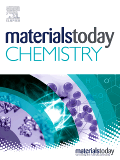
Materials Today Chemistry
Advancing Innovations in Materials ScienceMaterials Today Chemistry, published by Elsevier Science Ltd, is a leading journal in the field of materials science, with a primary focus on innovative research and advancements in chemistry relating to materials. Operating under ISSN 2468-5194, the journal has made a significant impact in various specialized areas such as biomaterials, catalysis, colloid and surface chemistry, and polymers, achieving a Q1 ranking across these categories in 2023. With its commitment to high-quality, peer-reviewed content, Materials Today Chemistry serves as an essential platform for researchers, professionals, and students aiming to stay at the forefront of materials research. The journal provides an open access model, enabling wide dissemination of research findings and fostering collaboration among the scientific community. Its esteemed ranking on Scopus, including a remarkable percentile position in materials chemistry and catalysis, underscores its importance in advancing the understanding and application of novel materials. Whether you're delving into cutting-edge synthesis techniques or exploring the latest in materials applications, Materials Today Chemistry remains a pivotal resource for breakthrough discoveries and pivotal insights in the realm of materials science.
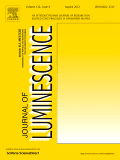
Journal of Luminescence
Illuminating Pathways in Atomic and Molecular SciencesThe Journal of Luminescence, published by ELSEVIER, is a leading interdisciplinary journal focused on the exploration of luminescence phenomena and applications across various scientific fields. Established in 1970, this prestigious journal has made significant contributions to the realms of Atomic and Molecular Physics, Biochemistry, Biophysics, Chemistry, and Condensed Matter Physics, as evidenced by its commendable Scopus rankings and category quartiles. As of 2023, it holds a Q2 ranking in multiple categories, indicating a robust impact in the community. The journal serves as a vital platform for researchers, professionals, and students alike, offering insights into the latest advancements in luminescence research and related applications, fostering innovation in both theoretical and experimental frameworks. The journal provides enriching content through its non-open access model, ensuring high-quality peer-reviewed research is accessible to those who prioritize impactful scholarly work. With a convergence period extending to 2025, the Journal of Luminescence continues to be an essential resource for those dedicated to the advancement of knowledge in the luminous sciences.

Nano Materials Science
Fostering Collaboration in the World of Nano Research.Nano Materials Science is a premier open-access journal dedicated to the dissemination of groundbreaking research in the fields of nanotechnology, materials science, and chemical engineering. Published by KEAI PUBLISHING LTD, this journal has quickly established itself as a leading platform in its area since its inception in 2019, with impressive rankings in the Scopus database, holding a Q1 position across multiple categories, including Chemical Engineering and Materials Science. Based in Beijing, China, Nano Materials Science provides researchers and practitioners access to a wealth of high-quality peer-reviewed articles, fostering innovation and collaboration within the scientific community. With its impact factor steadily rising and a commitment to open access, the journal aims to bridge the gap between theoretical research and practical applications, making it an essential resource for professionals and students eager to stay at the forefront of materials research and nanotechnology advancements.

Surfaces
Driving Discoveries in Interdisciplinary Surface ResearchSurfaces is an esteemed academic journal published by MDPI in Switzerland, operating as an open access platform since 2018. With an E-ISSN of 2571-9637, this journal focuses on the interdisciplinary advancements in the fields of chemistry, materials science, and physics, particularly in the domain of surfaces and interfaces. As a testament to its scholarly impact, Surfaces is ranked in the second quartile for multiple categories as of 2023, including Chemistry (miscellaneous), Materials Science (miscellaneous), Surfaces and Interfaces, as well as Surfaces, Coatings and Films, showcasing its relevance within these disciplines. Researchers and professionals seeking to disseminate and acquire knowledge on the latest innovations can benefit from the journal's rigorous peer-review process and commitment to quality, ensuring visibility and accessibility for current developments in surface technology and material interactions. With a growing archive from 2019 to 2024, Surfaces stands out as a vital resource for the academic community.

Frontiers in Nanotechnology
Exploring Innovative Solutions at the NanoscaleFrontiers in Nanotechnology, published by FRONTIERS MEDIA SA, is an esteemed open access journal that has established itself as a premier platform for the dissemination of innovative research in the rapidly evolving field of nanotechnology since its inception. Based in Switzerland, the journal is dedicated to advancing knowledge across multiple disciplines, including Atomic and Molecular Physics, Biomedical Engineering, Electrical and Electronic Engineering, and Computer Science Applications. With a remarkable track record, it maintains a commendable Category Quartile ranking of Q2 across various fields in 2023, highlighting its influence and the quality of research it publishes. Researchers will find this journal an essential resource for accessing cutting-edge developments and findings, enriched by its strong performance in Scopus rankings—positioned firmly within the top percentiles in key areas. As an open access publication since 2020, Frontiers in Nanotechnology champions the democratization of knowledge, ensuring that the latest advancements are freely available to the global academic community, enhancing collaborative efforts and driving innovation.